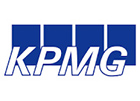Assignment
The service department consisted of 10 head office-based customer service advisors, 30 field based service engineers, 4 managers and 2 support staff (who kept engineers on the road and replenished their van stock).
On the very first morning of the assignment, I sat down with the 4 managers and we plotted the likely sequence of events if Mrs Smith was to ring up with a request for help right now.
In that first morning session, we identified a number of vital flaws in the service. The key ones were as follows:
- It was immediately clear that the working hours that the telephones were manned by Customer Service Advisors (CSAs) were not sufficiently customer friendly. If customers wanted to get in touch to report a problem they would probably do so before they went to work, during their lunch break or after they got home. The phones were not manned before 9am or after 6pm. The CSAs took their lunch at lunchtime thus the phones were manned by a skeleton staff at the very time when the company experienced the highest volume of calls in the day.
- The customer service advisors were inadequately trained. Their technical knowledge was very poor and therefore they were unable to determine what the engineer would be walking into when he arrived at the customer’s house.
- There was no escalation process for emergency situations. If someone reported that a crack had appeared above their bay window it was treated with the same emergency as a brass door handle that had tarnished.
- As a result of the above weakness, time allocation to each call was hopelessly inadequate. An engineer might be scheduled to complete 10 calls that could not be completed in a working day or 10 calls that were completed by lunchtime. It was entirely pot luck
- Even if the engineer’s workload was feasible, the mileage that they would need to travel to complete the day’s calls was not taken into consideration. Again, it was pot luck. It often led to engineers literally going in circles throughout the course of the day.
- The stock of spare parts held on the service engineer’s van had not been calculated in a methodical manner. As a consequence, there was stock on the vans that was never being used and the more frequently used parts were forever running out causing the engineer to waste time by having to go to the nearest installation depot to stock up.
- Because of the very low level of right first time call rate, the engineers were unhappy with their weekly pay packet. The reality was that the company had introduced a very generous fee structure if calls were completed successfully. However, the department’s infrastructure and inefficiencies were working against the engineers being successful.
- The lower pay levels and the high degree of inefficiency (some might say chaos) meant it was becoming more difficult to retain experienced engineers. Weaker engineers were being retained instead of being released and this was causing a higher level of incomplete service calls.
- There was no follow up with the customer. Head office had no feedback and was therefore unaware whether the call had gone very well, just ok or whether the outcome was in fact poor. More importantly, if a follow up call was required, no coordinated action was taken to ensure the follow up was effective and the customer received a prioritised action.
- The lack of follow up often resulted in customers feeling obliged to write to the company and express their feelings. This was creating the need for an additional role to monitor and manage such escalated issues.
Over the following twelve months, we set about addressing each of these areas.
Here is what we did:
We gave the CSAs basic technical training based around the most frequent types of service call. We seconded one of the engineers to have a short term spell off the road and inside with the CSAs and he monitored their calls and provided on call support. Their confidence grew and they provided a better service to the engineers.
We introduced a number of red flags which alerted the CSAs that the call may be a higher priority call. These calls were diverted through to the office-based Manager. He assessed whether the call was a potential emergency and reacted accordingly.
We then graded the CSAs based on their technical knowledge and experience and rewarded the staff who put the most effort in and thus provided a better service to the customers and engineers.
We changed the hours of work by introducing shift patterns. This extended the number of hours that the service call line was open to the public. We had a skeleton service staff in on Sundays thus making it a 7 day service.
We gave the CSAs an indicator of how long each service call type would take so they could better plan the number of calls in the day.
We enhanced the capabilities of the engineer’s handheld devices so that clearer guidance could be given to the engineer before he arrived at the service call.
We graded each postcode for how easy it would be for an engineer to travel across. We would try and batch calls to minimise travelling time for the engineer.
We identified outlying postcodes where we would only visit when there was a batch of calls to be carried out.
We introduced a new role of Journey Planner for the engineers and implemented software for journey planning the engineer’s routes. We introduced calls to each customer the evening before the planned call and gave them a two hour time slot.
Whilst we allowed the engineers to use their local knowledge to amend the route as they saw fit, we introduced a texting service to the next customer on completion of the previous service call.
We calculated the optimal stock profile that the engineers should carry on their vans that optimised the likelihood that the call would be completed at the first attempt. We sharpened up the stock replenishment process so that they would only have to visit their local depot once a week thus freeing up additional call time.
We introduced a hot line for engineers who hit major difficulties on their service call. This hot line enabled a Service Manager to react to their cry for assistance and help sort the engineer’s issue by dealing with the customer directly and/or by locating a nearby installation team to come to the engineer’s aid.
We introduced an end of day call back service to the customer where the call was discussed, the outcome confirmed and the CSA and engineer was graded by the customer.
We introduced weekly performance reports for the engineers showing how many calls they completed, how many incomplete calls (with reason codes) and how their customers rated them.
We introduced awards and financial incentives for the best performing engineers.
We introduced ‘intensive care’ processes for the worst performing engineers whereby a Service Manager would coach the engineer and try and bring him up to the required level.
We introduced quarterly travelling roadshows so the engineers were able to get together and get things off their chest. We were sure to document and follow up the meetings. Corrective action plans always followed those meetings.
We implemented target response times for dealing with written correspondence and helped the staff concerned with the letter writing skills.
























